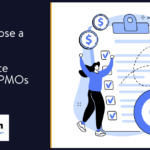Project management offices (PMOs) are tasked with ensuring projects come in on time and budget. Whether we’re talking about prototyping, software development, or something else completely, PMOs must have the right tools and processes in place to ensure success.
Project tollgates are among the most important assets a PMO possesses and play a critical role in developing deliverables. Think of them as checkpoints that help determine if the project is proceeding correctly. You can also think of them as go/no-go inflection points.
What Are Project Tollgates?
Project tollgates are precisely what they sound like – checkpoints during the project development process. Think of them like toll booths on a highway. Traffic flows along normally but must slow down as it comes to the line of toll booths. Drivers pay their tolls and then accelerate away.
Project tollgates work similarly. Work proceeds according to plan for a specific duration, and then stakeholders, sponsors, and the project leader gather to review the completed phase. This allows everyone to ensure that the project is on track, that features and functions are working as predicted, and whether any adjustments must be done before moving on to the next phase of development.
If everything is good, the project is given the “go” signal. If it’s not, then it’s given the “no go” signal. If the project is a go, then it moves to the next phase, including initiation, planning, control, execution, and close, before arriving at the next tollgate. This process repeats for each phase of development until the project concludes.
When Should Tollgates Be Used?
Tollgates are primarily used in conjunction with specific project management methodologies, but not all of them. For instance, they’re commonly found within the waterfall method, PRINCE2, and PMBOK. However, you don’t usually see them in Agile projects.
In terms of structure and frequency, tollgates are usually implemented between project development phases. This ensures that the previous phase is completely wrapped up before the team moves on to the next phase, thereby eliminating wasted time and effort involved in chasing down problems that should have been corrected earlier in the development process, reducing overall costs, and increasing completion speed and quality.
What Are the Benefits of Project Tollgates?
Project tollgates offer important benefits for PMOs, stakeholders, and the target audience of the project (software users, customers, etc.), including the following:
- Helps manage risk
- Ensures all criteria are met at each stage
- Involves stakeholders and sponsors so everyone is “on the same page.”
- Helps create a manageable project plan
- Allows a management-by-exception approach, which empowers project governance
What Are the Drawbacks of Project Tollgates?
While project tollgates offer many benefits, they are not without their challenges. The single largest one is that they can add complexity to the process. Each checkpoint must be planned and implemented, stakeholders and others must be alerted, meetings must be set, and more.
Project tollgates also require honesty and a practical mindset. It’s important for managers and others to take a deep look at the project at each checkpoint to assess not just progress and level of completion, but whether the project should be paused. These decisions must be made based on practicality, and not fueled by high burn rates or pressure from the C suite.
In Conclusion
In the end, project tollgates are important tools in the PMO’s toolkit. They help ensure that the required functionality and features are present and working as intended at the end of each development phase. They also ensure that management, stakeholders, and sponsors communicate directly throughout the project. And while they do have some drawbacks, their benefits make them must-have components of any successful project using an applicable project management methodology.






